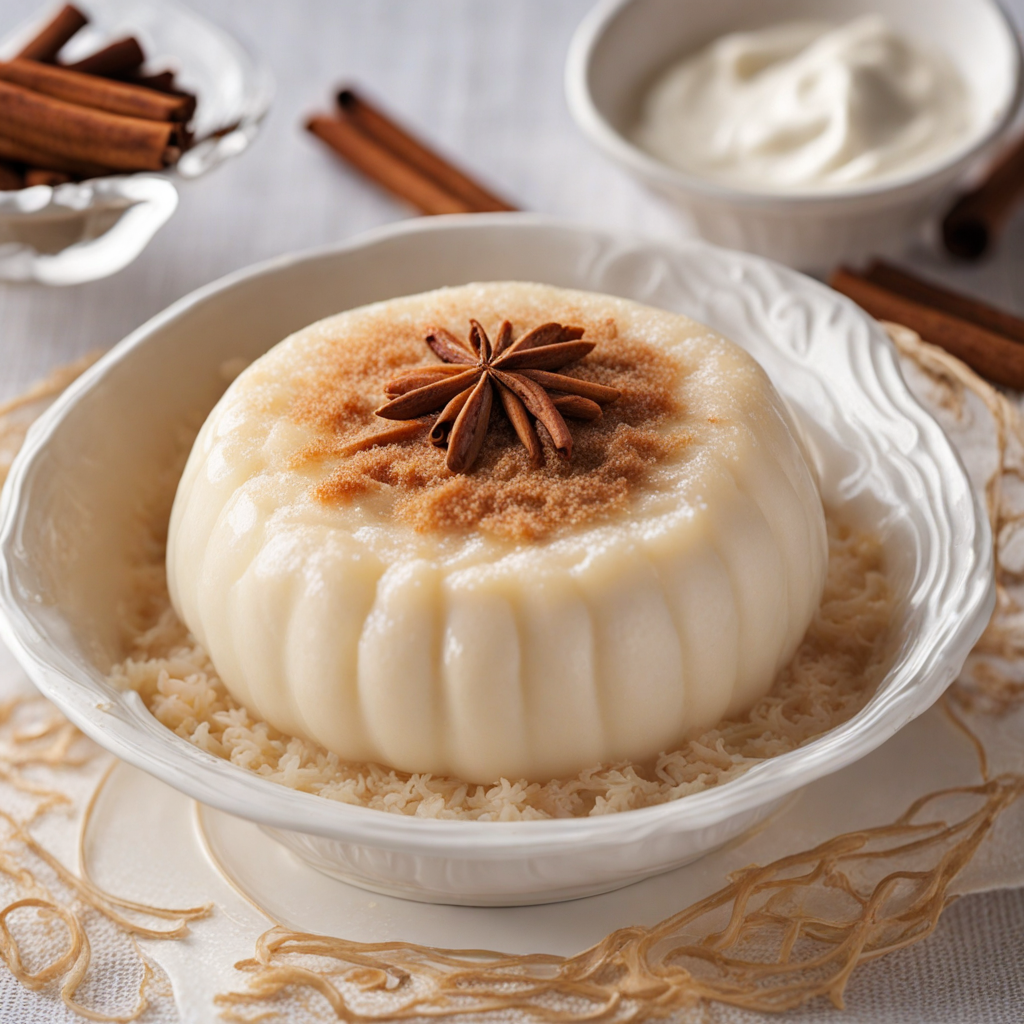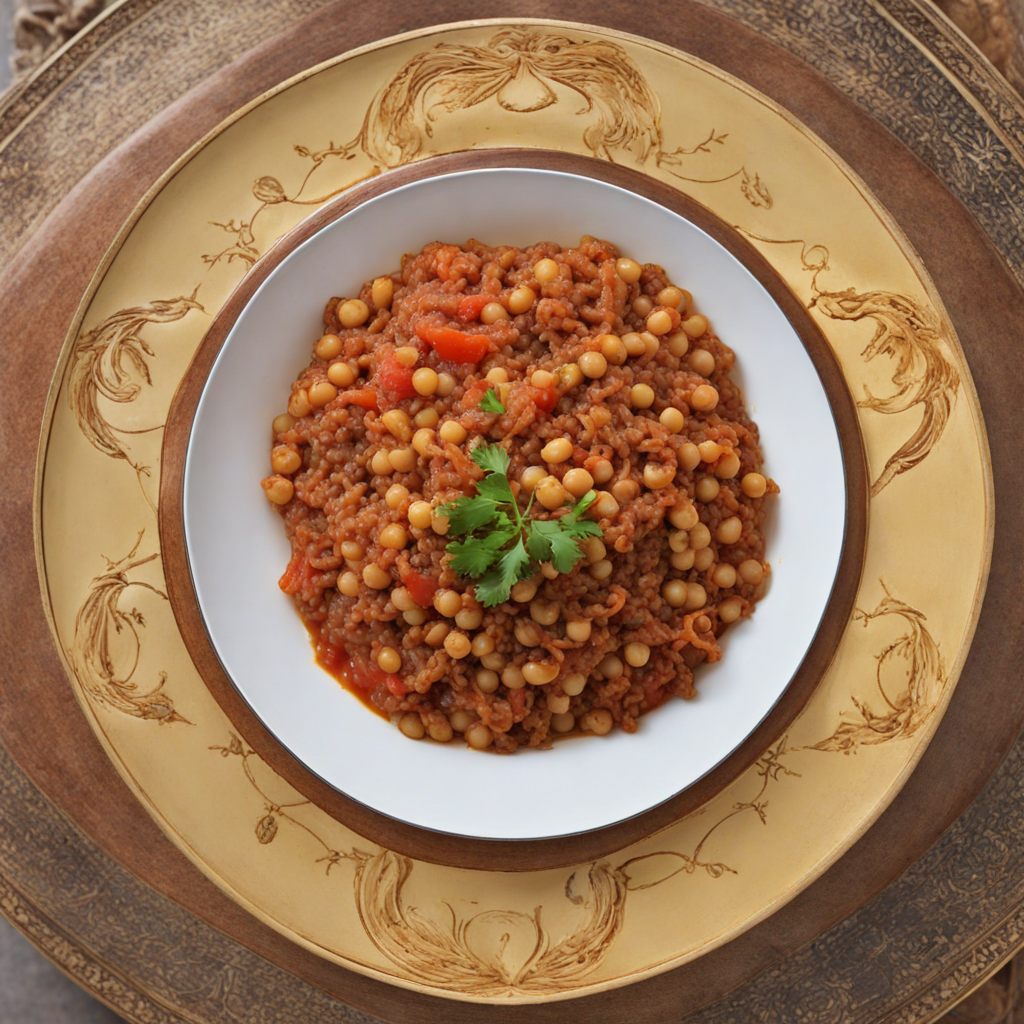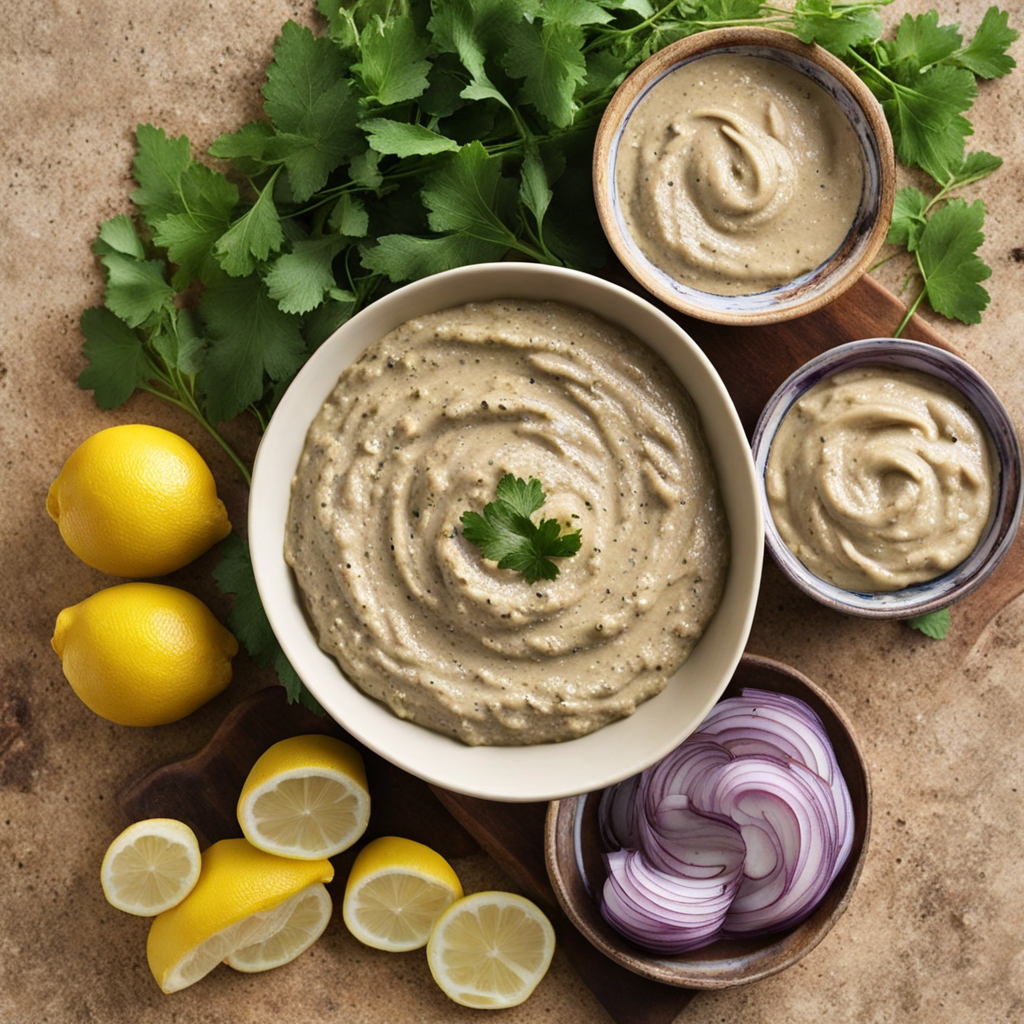Egyptian Rice Pudding
Egyptian Rice Pudding, known as "Roz Bel Laban," is a delightful and creamy dessert that embodies the rich culinary history of Egypt. This comforting dish is primarily made from rice, milk, and sugar, resulting in a silky texture that pairs beautifully with the subtle flavors of vanilla and a hint of orange blossom water. The rice is slow-cooked to perfection, absorbing the creamy milk and sweetening it during the process, creating a luscious base that is both satisfying and indulgent. To elevate the flavors, Egyptian Rice Pudding is often garnished with a sprinkle of cinnamon or crushed nuts, such as pistachios or almonds, adding a delightful crunch that contrasts with the smoothness of the pudding. The aromatic spices not only enhance the dish's visual appeal but also introduce warmth and depth, making each bite an experience to savor. Some variations may even include raisins or coconut flakes, providing additional layers of taste and texture that reflect the diverse influences on Egyptian cuisine. Served chilled or at room temperature, this traditional dessert is a beloved treat enjoyed by locals and visitors alike. It can be found in homes, street stalls, and restaurants across Egypt, often served during festive occasions or family gatherings. The simplicity and elegance of Egyptian Rice Pudding make it a perfect introduction for those looking to explore the vibrant flavors of Egyptian desserts, showcasing a harmonious blend of comfort and sophistication that is sure to please any palate.
How It Became This Dish
The History and Cultural Significance of أرز باللبن (Rice Pudding) in Egypt Introduction A traditional Egyptian dessert, أرز باللبن (pronounced "ruz bil-laban"), translates to "rice with milk." This comforting dish, resembling a creamy rice pudding, has been a staple in Egyptian households for centuries. Its origins are steeped in the rich tapestry of Egypt's culinary history, reflecting the influences of various cultures and the evolution of local ingredients. This essay delves into the origins, cultural significance, and development of أرز باللبن, revealing how it has maintained its place in the hearts and homes of Egyptians over time. Origins of أرز باللبن The roots of أرز باللبن can be traced back to ancient Egypt, where rice was cultivated along the fertile banks of the Nile. Although rice was not native to Egypt, it was introduced through trade routes connecting the Middle East and Asia. By the time of the Arab conquests in the 7th century, rice had become a common ingredient in Egyptian cooking. The combination of rice and milk likely emerged as a result of the influence of Persian and Arab culinary traditions that favored dairy products and grains. The earliest known references to a rice pudding-like dish in the region date back to medieval times. Arab scholars and culinary writers documented various ways of preparing rice with milk, often sweetened with honey, flavored with spices, and garnished with nuts. These recipes reflected the lavish feasting traditions of the time, where desserts played a significant role in hospitality. The dish evolved over the centuries, adapting to local tastes and available ingredients. Cultural Significance In Egypt, أرز باللبن is more than just a dessert; it embodies nostalgia, comfort, and familial bonds. It is commonly prepared during special occasions, such as Ramadan, weddings, and family gatherings, serving as a symbol of hospitality and warmth. The act of cooking and sharing أرز باللبن transcends the mere act of eating; it strengthens family ties and preserves cultural heritage. During Ramadan, when Muslims fast from dawn until sunset, أرز باللبن is often served as part of the iftar meal, breaking the fast. Its creamy texture and sweet flavor provide a satisfying end to a day of fasting, offering nourishment and comfort. The dish is often garnished with cinnamon, nuts, or a drizzle of honey, enhancing its appeal and making it a beloved choice for many families. Moreover, أرز باللبن has found its way into street food culture in Egypt. Vendors selling this delectable treat can be found throughout cities, with each vendor often boasting their unique recipe. This accessibility has allowed the dish to become a staple of everyday life, enjoyed by people from all walks of life. Development Over Time As Egypt underwent significant social and political changes throughout history, so too did the preparation and presentation of أرز باللبن. The Ottoman Empire's influence in the 15th century introduced new culinary techniques and flavors, further enriching the Egyptian palate. The incorporation of spices like cardamom and rosewater became popular, adding depth to the dish. In the 19th and early 20th centuries, during the period of modernization and Westernization in Egypt, the presentation of أرز باللبن evolved. While traditionally served in simple bowls, it began to be presented in more elaborate ways, often adorned with ornaments and served as a part of a larger dessert platter. The introduction of new ingredients, such as vanilla and coconut, also diversified the flavors of this beloved dish, allowing for regional variations. The mid-20th century saw the rise of mass production and commercial food products, including packaged rice and ready-to-make dessert mixes. While these innovations provided convenience, they also sparked a conversation about authenticity and traditional cooking practices. Many families continued to pass down their recipes, ensuring that the homemade version of أرز باللبن remained a cherished part of their culinary heritage. Modern Day and Global Influence Today, أرز باللبن has transcended its Egyptian roots, finding its place in global cuisine. It is often featured in Middle Eastern restaurants around the world, appealing to both those familiar with the dish and newcomers discovering its delights. Variations exist, with different countries adding their unique touches—such as using coconut milk in the Levant or incorporating fruit in other regions. In contemporary Egypt, أرز باللبن continues to be a beloved dessert, enjoyed by all ages. Food bloggers and chefs have taken to social media to share their interpretations of the dish, experimenting with flavors and presentation. This has sparked a renewed interest in traditional Egyptian cuisine, with أرز باللبن serving as a gateway for many to explore the rich culinary heritage of the country. Conclusion The history of أرز باللبن in Egypt is a testament to the power of food as a cultural touchstone. From its humble origins to its status as a beloved dessert, it reflects the interplay of tradition and modernity, local and global influences. As families continue to gather around bowls of creamy rice pudding, the dish remains a symbol of comfort, connection, and shared history. In every spoonful of أرز باللبن, one can taste the essence of Egypt—a country where food is not just sustenance but a celebration of life, love, and heritage.
You may like
Discover local flavors from Egypt







